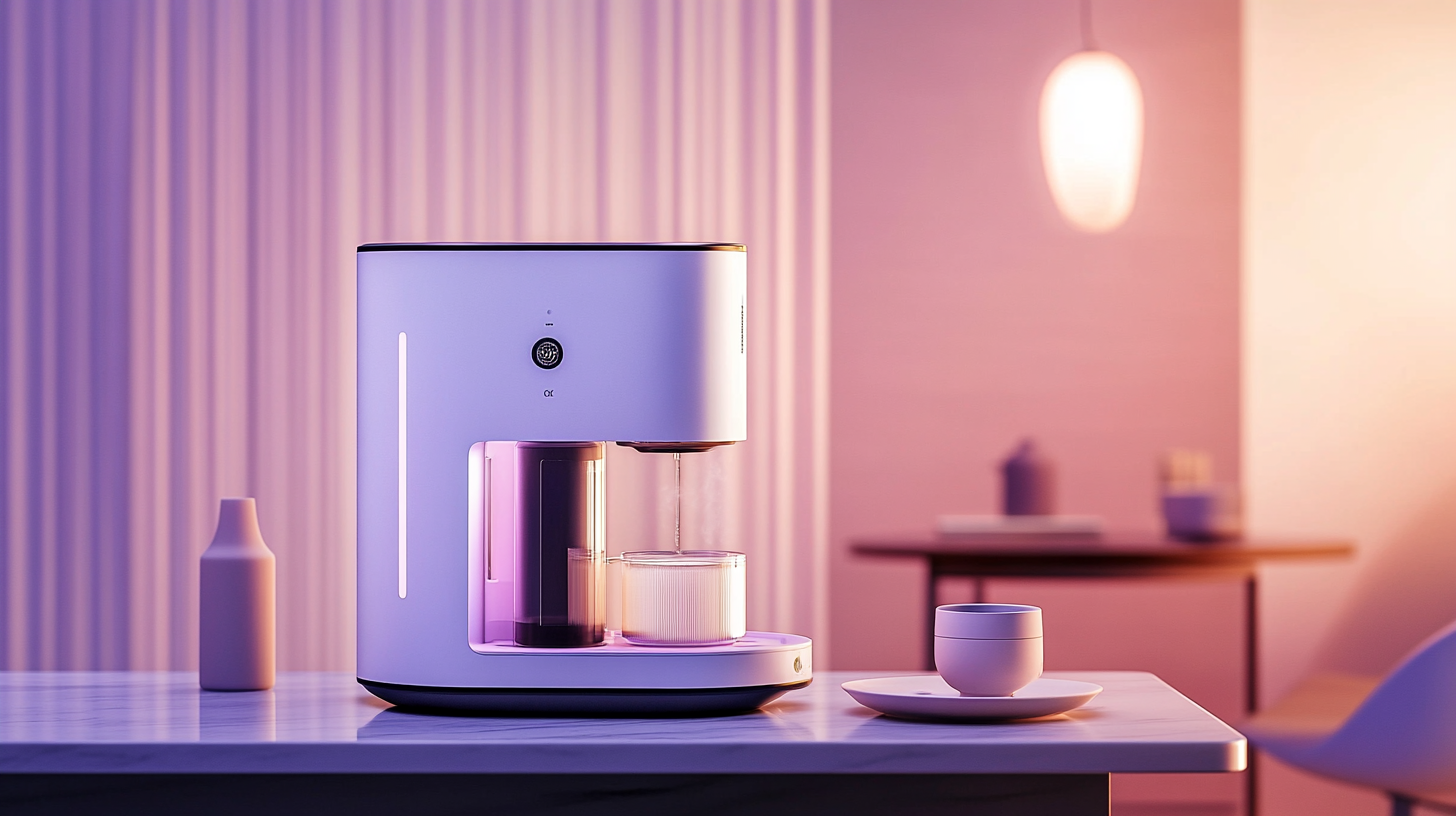Automated Dispensing Robot Videos
A World of Robotic Dispensing and Assembly SolutionsRevolutionizing Production with the Latest Silicone Dispensing Machine Technology and Market Insights
The manufacturing landscape is undergoing a significant transformation, particularly with the advent of advanced technologies designed to enhance production efficiency and accuracy. Among these innovations, the Silicone Dispensing Machine stands out as a game-changer, offering unprecedented capabilities for industries that rely on silicone applications. This technological breakthrough not only streamlines the dispensing process but also improves material usage, leading to cost savings and higher quality products. As companies strive to remain competitive in a fast-evolving market, understanding the latest advancements in silicone dispensing technology is essential.
In this blog, we will explore the revolutionary features of modern Silicone Dispensing Machines and how they are reshaping production methodologies. We will delve into market insights that highlight the rising demand for precision and reliability in manufacturing processes. By examining case studies and expert opinions, this article aims to provide a comprehensive look at how embracing this technology can unlock new opportunities for businesses, ensuring they stay at the forefront of their industries. Join us as we uncover the potential of silicone dispensing technology and its impact on future production practices.

Emerging Trends in Silicone Dispensing Technology for Modern Manufacturing
The landscape of manufacturing is witnessing a transformative shift with the advent of advanced silicone dispensing technologies. One notable trend is the integration of sustainable practices, as evidenced by the adoption of innovative dispensing valves that not only enhance functionality but also contribute to eco-friendly packaging solutions. The move towards sustainable materials is reshaping how products are designed and delivered, encouraging manufacturers to invest in technology that supports both operational efficiency and environmental responsibility. Moreover, medical-grade silicone applications are taking a front seat in the healthcare industry, where reliability and precision are paramount. The latest dispensing systems enable the direct injection of pre-sterilized silicone into patients, ensuring that the material perfectly conforms to individual anatomies. This trend underscores the importance of customization in modern manufacturing processes, particularly in sectors where patient care is critical. Another area experiencing remarkable growth is the silicone conformal coating market, projected to expand significantly over the next decade. As manufacturers increasingly recognize the importance of protective coatings in enhancing product longevity and performance, the estimated growth from USD 1.2 billion to USD 2.5 billion by 2033 highlights the rising demand for silicone solutions. The evolution of these technologies not only reflects a shift towards more innovative manufacturing methods but also a commitment to improving product integrity across various industries.

Key Features of the Latest Silicone Dispensing Machines in the Market
The latest silicone dispensing machines are at the forefront of transforming manufacturing processes across various industries. One of the key features of these machines is their precision in dispensing, which ensures a consistent and accurate application of silicone. Advanced calibration systems allow for micro-adjustments that tailor the dispensing rate to specific production requirements, minimizing waste and enhancing product quality. This precision is crucial in industries where the performance of components directly impacts safety and reliability, such as automotive and aerospace.
Another significant advancement in silicone dispensing technology is the integration of automation and smart technology. Many of the latest models come equipped with user-friendly interfaces and real-time monitoring systems that allow operators to oversee the dispensing process remotely. This not only streamlines workflow but also reduces the likelihood of human error. Furthermore, these machines often support data logging and analysis, enabling manufacturers to identify trends and optimize their processes for better efficiency and productivity.
Additionally, the versatility of modern silicone dispensing machines cannot be overlooked. Many units are designed to handle a wide array of silicone formulations, accommodating varying viscosities and curing times. This flexibility opens up opportunities for customization, allowing businesses to create specialized products that cater to specific market demands. As industries continue to evolve, these advanced machines are set to play a pivotal role in meeting the growing need for high-quality silicone applications, thereby revolutionizing production capabilities.

Analyzing the Impact of Silicone Dispensing on Production Efficiency
The rise of silicone dispensing technology has dramatically reshaped production efficiency across various industries. By streamlining the application of silicone materials, modern dispensing machines minimize waste, reduce production time, and enhance product quality. These advancements not only optimize the manufacturing processes but also empower companies to meet the growing demands for precision and speed in the marketplace.
Incorporating state-of-the-art silicone dispensing machines enables manufacturers to automate processes that were once manual and prone to error. With precise control over material amounts and application techniques, these machines significantly enhance consistency in production. This accuracy leads to fewer defects and a reduction in costly reworks, allowing companies to allocate resources more effectively and boost overall productivity.
Furthermore, the integration of smart technology into silicone dispensing systems has introduced features like real-time monitoring and data analytics. This capability allows for immediate adjustments to operations based on performance metrics, ultimately driving continuous improvement. By leveraging these insights, production teams can identify bottlenecks and implement timely solutions to elevate efficiency and output, ensuring that they remain competitive in an ever-evolving market.

Cost-Benefit Analysis: Investing in Advanced Silicone Dispensing Equipment
Investing in advanced silicone dispensing equipment can be a game-changer for manufacturers looking to enhance their production processes. The latest silicone dispensing machines are designed to drastically improve precision and efficiency, allowing companies to minimize waste and maximize output. A cost-benefit analysis indicates that while the initial investment may seem steep, the long-term savings and productivity gains can outweigh the upfront costs. Manufacturers can expect reduced labor costs and lower material wastage, leading to a more sustainable operation.
Moreover, the enhanced capabilities of modern silicone dispensing machines can open up new market opportunities. With faster turnaround times and the ability to handle complex designs, businesses can cater to a wider range of clients and projects. This not only strengthens their competitive edge but also positions them favorably in a constantly evolving market. As industries increasingly prioritize quality and efficiency, staying ahead with cutting-edge technology becomes essential for growth.
Careful consideration of maintenance and training costs is also vital in this analysis. Investing in comprehensive training programs ensures that staff can proficiently operate the new machinery, maximizing its potential benefits. Consequently, the decision to invest in advanced silicone dispensing equipment should be viewed not merely as a cost but as a strategic move that can lead to greater operational effectiveness and enhanced market standing.
Future Directions: Innovations Shaping the Silicone Dispensing Industry
The silicone dispensing industry is undergoing a transformative phase, driven by innovations that not only enhance production efficiency but also improve product quality. Recent advancements in silicone dispensing machine technology are at the forefront of this evolution, enabling manufacturers to achieve higher precision and better control over the dispensing process. The introduction of smart features, including IoT integration and advanced sensors, allows for real-time monitoring and adjustments, thus minimizing waste and ensuring consistent output.
Future directions within this industry are significantly influenced by emerging trends such as automation and sustainability. The adoption of automated systems is streamlining operations, reducing labor costs, and increasing throughput. Moreover, manufacturers are now focusing on eco-friendly practices, utilizing recyclable silicone materials and energy-efficient machines to align with global sustainability goals. This shift not only benefits the environment but also resonates with consumers increasingly seeking sustainable products.
Additionally, the rise of personalized silicone applications has prompted further innovation in dispensing technologies. Companies are exploring customizable solutions to meet diverse client needs, from medical devices to consumer goods. As these tailored solutions gain traction, the industry is poised to embrace more advanced formulations and novel application techniques, cementing silicone’s role as a vital material in various sectors. This focus on innovation is set to redefine the standards of quality and efficiency in silicone dispensing, opening new avenues for growth and creativity in the market.

